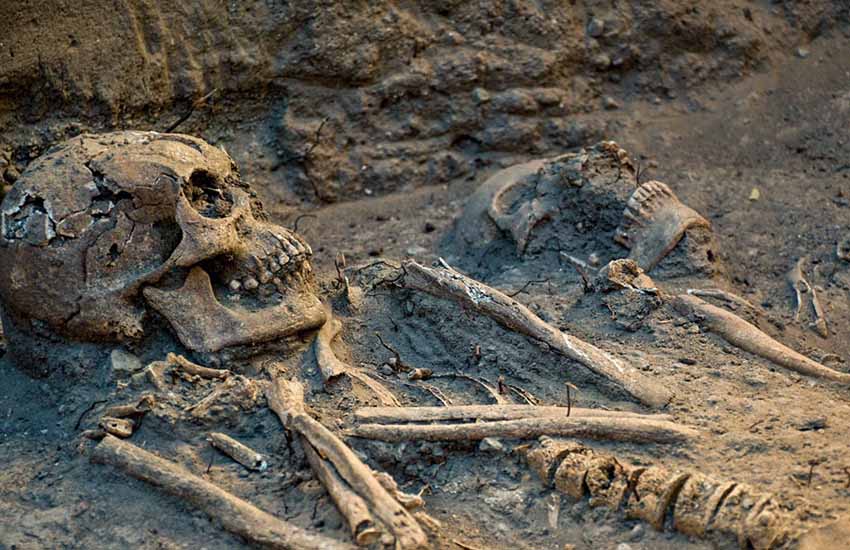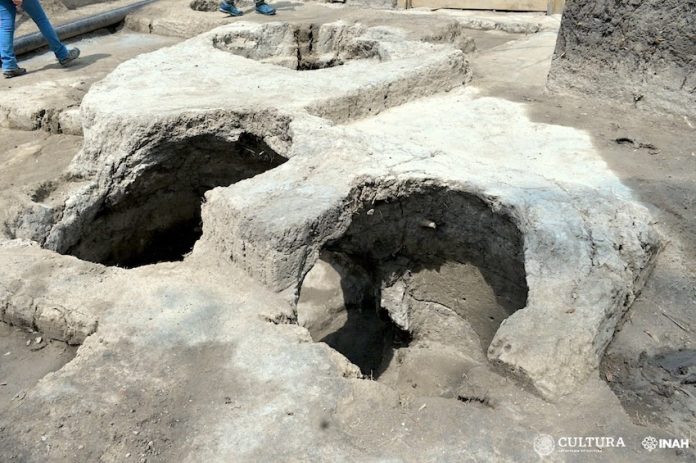Archaeologists have discovered a series of 3,500-year-old graves on the edge of Mexico City’s Chapultepec Park, the National Institute of Anthropology and History (INAH) revealed last Friday.
The discovery occurred earlier this year, during construction work on Line 3 of the Cablebus, near Avenida Constituyentes.

The graves include ten truncated conical tombs, half of them containing human remains – four women and one man, most of them young adults. They are believed to come from a large village that existed in the Lomas de Chapultepec area during the Early and Middle Preclassic periods (2,500-400 B.C.).
“This community was living here before the eruption of the Xitle volcano and the formation of the Pedregal de Coyoacán [lava fields]. And this subsoil was preserved intact for more than 3,000 years. It’s fantastic!” said the excavation coordinator, María de Lourdes López Camacho.
Xitle’s last major eruption was in around 245-315 A.D., when it destroyed the city of Cuicuilco, an important archaeological site in what is now the borough of Tlalpan.
The discovery of these tombs provides further evidence of the early human habitation of the area, after a collection of objects from the same era was discovered last year.

Most of the burial chambers are between one and two meters in diameter, with a maximum height of 1.5 meters. They are known as botellón or bell tombs, due to their inverted conical shape.
“It is a very particular funerary architecture,” López Camacho said. “Examples of these tombs have been found in other areas of Mexico such as the Gulf Coast and the West; they have also been found in the present-day states of México and Morelos, and there are records of them in the south, north and east of the México Basin. ”
Archeologists also discovered a series of later burials at the site, demonstrating a prolonged history of habitation.
Both sets of tombs contained a series of objects left as offerings, including tools carved from deer antlers, a cup, and numerous female figurines. All of these have been taken to the National Museum of History in Chapultepec Castle for further study.
Building work around Chapultepec Park has exposed a rich series of historical finds over recent years. In February, archaeologists performing pre-construction restoration work in the park discovered a 16th-Century cemetery, dating from less than 100 years after the Spanish conquest of Tenochtitlán.
Mexico News Daily
